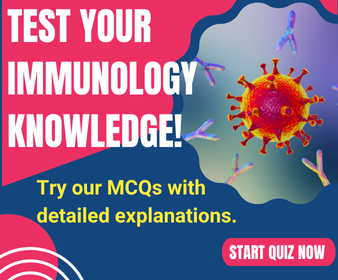In this article, I briefly describe primary immunodeficiencies, which are mostly hereditary and may be minor or life-threatening.
Primary Immunodeficiency
The condition is known as immunodeficiency when our immune system fails to protect us from diseases. Primary immunodeficiency results from an inherited genetic defect. This is generally a birth defect and causes many health issues in early life. Immunodeficiency disorders are minor or life-threatening. Secondary immunodeficiency is the loss of immune function from exposure to an external agent.
Primary immunodeficiency diseases have provided immunologists with valuable insights into the critical roles of specific proteins and cellular processes necessary for a well-functioning immune system. These conditions range in severity from mild to life-threatening if left untreated or if infections are not adequately controlled. They are generally classified based on whether they impact innate or adaptive immunity and are often further categorized by the particular immune system components most affected, including B cells, T cells, combined B and T cells, phagocytes, innate immunity, and complement systems. However, the intricacies of interconnections between immune responses develop defects in one component, which appear in other arms of the immune response. Different gene defects can produce the same phenotype, making the classification complicated.
Impact of Genetic Disruptions on Immune System Function
The consequences of disrupting a specific gene in the immune system depend on the role of the affected protein, the nature of the mutation, and how it influences immune responses. Defects that impair early hematopoietic cell development have a cascading effect, disrupting all processes downstream. Certain genetic mutations can block the production of some or all lymphocyte populations, resulting in severe combined immunodeficiency (SCID), which compromises both humoral and cell-mediated immunity. For example, mutations in proteins essential for antigen receptor V(D)J recombination, such as RAG proteins, may completely or partially inhibit T and B cell development, depending on the residual functionality of the mutant protein.
T cells play a vital role in coordinating immune responses. Thus, defects in T cells tend to have a broader impact on immune responses compared to mutations that exclusively affect B cells or innate immunity. Consequently, impairments in T cell development or function often compromise humoral and cell-mediated immunity. On the other hand, reduced production of phagocytes like neutrophils and macrophages, or diminished ability to kill phagocytosed microbes, typically leads to increased vulnerability to bacterial and fungal infections.
Immunodeficiency Syndrome
The downstream components of the immune system are affected by mutations resulting in deficiencies in the production of interferons, complement components, or certain immunoglobulin classes. This results in more specific and less severe consequences. A new category of immunodeficiency syndrome emphasizes the importance of immune regulation, “the breaks” of the immune system. APECED (autoimmune polyendocrinopathy with candidiasis and ectodermal dysplasia) and IPEX (immune dysregulation, polyendocrinopathy, enteropathy, X-linked syndrome) are the two immunodeficiency disorders caused by single-gene defects (Figure 1). This leads to the failure of normal self-tolerance mechanisms like thymic negative selection and the formation of regulatory T cells, respectively. In these conditions, the presence of self-reactive T cells leads to autoimmunity.

Individuals Show Symptoms of Suffering from Inherited Immunodeficiency
The type of immune defect influences which groups of pathogens pose the greatest challenge to individuals with inherited immunodeficiency disorders. Defects that impair B cells and reduce the production of one or more antibody classes or isotypes are often associated with recurrent bacterial infections. Similar symptoms can also occur in individuals with mutations in genes responsible for complement components, which collaborate with antibodies to eliminate extracellular pathogens.
Phagocytes play an important role in eliminating fungi and bacteria. Individuals with disrupted phagocytic functions suffer from more fungal and bacterial infections. Disruption in the number of T cells leads to cell-mediated cytotoxicity, depressed antibody production, and dysregulation of cytokine production. Defects in regulatory T cells lead to the development of autoimmunity.
Early Detection of Primary Immunodeficiency Diseases
Children early in life suffer from frequent infections, which lead to the detection of primary immunodeficiency diseases. Due to certain warning signs, immunodeficiencies are detected in babies. The Jeffrey Model Foundation created a poster for physicians and other healthcare workers that includes ten warning signs of primary immunodeficiency. The foundation funds immunodeficiency disease research and patient information resources.
According to the Jeffrey Model Foundation, the ten warning signs of primary immunodeficiency are
- Four or more new ear infections within a year.
- Two or more serious sinus infections within a year.
- Two or more months on antibiotics with little effect.
- Two or more pneumonias within 1 year.
- Failure of an infant to gain weight or grow normally.
- Recurrent, deep skin or organ abscesses.
- Persistent thrush in the mouth or fungal infection on the skin.
- Need for intravenous antibiotics to clear infections.
- Two or more deep-seated infections, including septicemia.
- A family history of primary immunodeficiency.
Diagnosis of Primary Immunodeficiencies
Detection of primary immunodeficiencies is difficult as these do not appear in the first few months of life. Infants are protected from many infectious diseases due to the circulating maternal antibodies. An infant’s response to the vaccine is monitored, and tests are done for genetic variants associated with particular conditions. This leads to the evaluation of immunodeficiency. Confirmation of the diagnosis of a specific immunodeficiency takes time, and this may delay the diagnosis several months. Thus, newborns are at increasing risk during a time when they are highly susceptible to infections.
To facilitate the early detection of severe primary immunodeficiencies that hinder lymphocyte development, a newborn screening test has been created. This test uses the routine blood samples collected from newborns through heel or finger pricks and employs a rapid polymerase chain reaction (PCR)-based assay to detect V-J gene rearrangements in the T-cell receptor alpha chain genes. During the rearrangement process, the DNA segment removed between the V and J gene regions forms circular DNA structures. These structures, known as T-cell receptor excision circles (TRECs), are often retained in circulating T cells in a newborn’s bloodstream.
Conclusion
Primary immunodeficiency results from an inherited genetic defect. This is generally a birth defect and causes many health issues in early life. Primary immunodeficiency diseases have provided immunologists with valuable insights into the critical roles of specific proteins and cellular processes necessary for a well-functioning immune system.
T cells play a vital role in coordinating immune responses. Thus, defects in T cells tend to have a broader impact on immune responses compared to mutations that exclusively affect B cells or innate immunity. Consequently, impairments in T cell development or function often compromise both humoral and cell-mediated immunity.
The downstream components of the immune system are affected by mutations resulting in deficiencies in the production of interferons, complement components, or certain immunoglobulin classes. This results in more specific and less severe consequences. Phagocytes play an important role in eliminating fungi and bacteria. Individuals with disrupted phagocytic functions suffer from more fungal and bacterial infections.
Detection of primary immunodeficiencies is difficult as these do not appear in the first few months of life. Infants are protected from many infectious diseases due to the circulating maternal antibodies. An infant’s response to the vaccine is monitored, and tests are done for genetic variants associated with particular conditions. This leads to the evaluation of immunodeficiency.
You may also like:
- Systemic autoimmune diseases
- The Complement system functions in various ways
- Severe combined immunodeficiency (SCID) interrupts with T-cell and B-cell responses
- Primary immunodeficiency results in different immunodeficiency syndromes
- Various factors cause secondary immunodeficiencies

I, Swagatika Sahu (author of this website), have done my master’s in Biotechnology. I have around fourteen years of experience in writing and believe that writing is a great way to share knowledge. I hope the articles on the website will help users in enhancing their intellect in Biotechnology.




